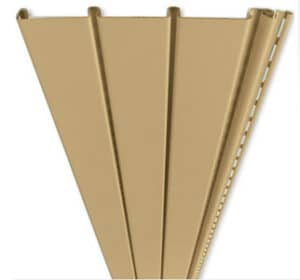Proper Roof Ventilation
Proper roof ventilation is a key in making sure that your roof lasts a very long time. There are several types of roofing ventilation systems for your home available today. Harris‘ goal is to educate you on the advantages and disadvantages of each type of roofing ventilation. During our roof inspection we will recommend the most efficient type of roof ventilation to fit your specific needs.
Free Estimates and Consultations
Roof Attic Ventilation Requirements
How Many Attic Vents Does Your Roof Need to Meet Requirements?
- Industry standard for proper attic ventilation recommends (for no vapor retarder type of attic insulation – no paper, plastic or aluminum layer between the attic floor and insulation layer) 1 square foot of ventilation for every 150 square feet of attic space divided 50% split between input (soffit vents) and output (static/power/ridge vents).
- For vapor retardant equipped attic insulation (for example fiberglass blankets/bats with paper facing), you should have 1 square foot for every 300 square feet of attic space – assuming that everything else is perfect.
Ventilation should never be an afterthought in constructing a home. Without proper ventilation, needless heat and humidity can become serious problems, such as:
- Surplus heat and moisture can cause attic and roof structures (plus shingles and paint) to deteriorate prematurely
- Excess heat causes air conditioners to work more, consuming more energy and costing you more money
- Extra moisture can lower the R-value (R-value is heat resistance) of some insulation
- Excess moisture and humidity enable mold, mildew and wood rot
- Proper ventilation is required to validate warranty coverage for most roofing shingles
Types of Vents and Ventilation
Gable Vents
These types of vents are popular but often least effective. They are installed in the gable wall below the peak of the roof and are available in several shapes and colors.
Louver Vents
These are also known as pod vents and are made of sheet metal cylinder with a flashing collar and a metal hood to keep rain out. They are installed in rows along the face of the roof by cutting holes in the roof, nailing the flashing collars to the roof sheathing and shingling around the vents. Their effectiveness depends on how many are installed; their greatest disadvantage is that like any roof penetration, they may leak.
Ridge Vents
Over the years, the ridge vent has become one of the most common forms of roof ventilation. This is because, in many instances, it is also the most efficient form of ventilation. To install a ridge vent, a hole is cut along the ridge of the roof and the ridge vent is nailed to cover it. Air enters the attic space through soffit vents and exits through the ridge vent, cooling the attic space through continuous air circulation. We install high quality matching shingled-over ridge vents to match the color of your roof!
Ridge vents are installed all along the ridge of the home. A 1 ½” strip is cut along the ridge allowing 18” net free air for your output. A ridge vent needs equal input to be effective. So in order to have an effective ridge vent we need 18” net free ventilation from the soffit.
Advantages:
- Most efficient form of ventilation
- Helps reduce moisture build up in your attic space
- Shingled-over ridge vent can blend in with your roof
- Doesn’t require any type of power to run
Power Ventilators
Attic fans suck out air from the attic. They are turbine vents that consist of a turbine mounted on a sheet-metal cylinder. They are installed like roof line vents along the face of the roof. When the wind blows, it spins the turbine, which in turn draws air up out of the attic.
Soffit & Fascia Vents
Soffit vents are considered input for your ventilation system. The vents are located under the eaves, right near where the gutters should be. They often have a screen over them to prevent insects from coming in and can be as long as 22″. They are one of the easiest to install by cutting rectangular holes in the soffit and screwing the vent over the hole.
There are two kinds of exhaust vents; static vents and power ventilators.
- Static vents include ridge vents and allow the air to escape. Ridge vents are considered the most efficient and cost-effective.
- Power fans are the best source of ventilation based on that is that it is a pro active choice for venting your attic space. When your attic temperature reaches past a certain temperature it will turn on the fan until it has cooled down the attic to the set temperature.
Power Attic Fan Ventilation
Power attic fans are sold in two ways: electric powered and solar powered. Most models feature an adjustable thermostat or humidistat depending on your preference. Electric power fans are the most common type of power attic fan but a power source must be available in the attic.
Advantages:
- Pro active roof ventilation
- Cools roof attic quicker
- Great for hipped roofs
- Adjustable by thermostat-humidistat
- Single unit can ventilate a fairly large roof attic space
